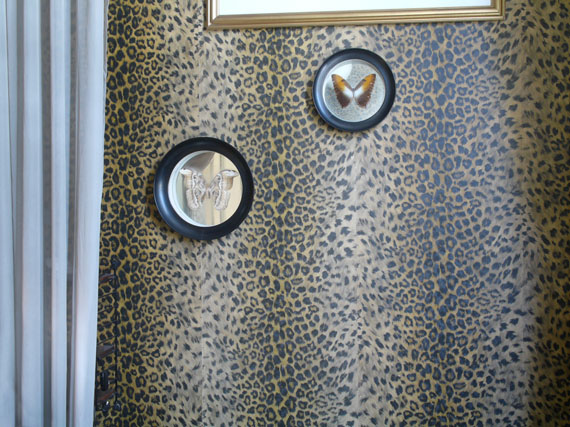
VIA NAPIONE II, #10 2010
C-Print, 42 × 56 cm
© VG Bild-Kunst, Bonn, Heidi Specker, 2015
NATURZEICHENZEICHNEN
Drawing the Symbols of Nature
Dieter Appelt » Hedwig Bornemann » Fritz Brill » Amin El Dib » Jitka Hanzlová » Rainer König » Gabriele Kostas » Hans W. Mende » Nanne Meyer » Loredana Nemes » Floris Neusüss » Michael Schmidt » Arno Schmidt » Heidi Specker » Hanns Zischler »
Exhibition: 4 Jul – 13 Sep 2015
Fri 3 Jul 19:00
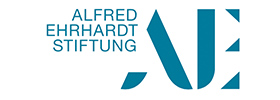
Alfred Ehrhardt Stiftung
Auguststr. 75
10117 Berlin
+49 (0)30-20095333
info@aestiftung.de
www.aestiftung.de
Tue-Sun 11-18
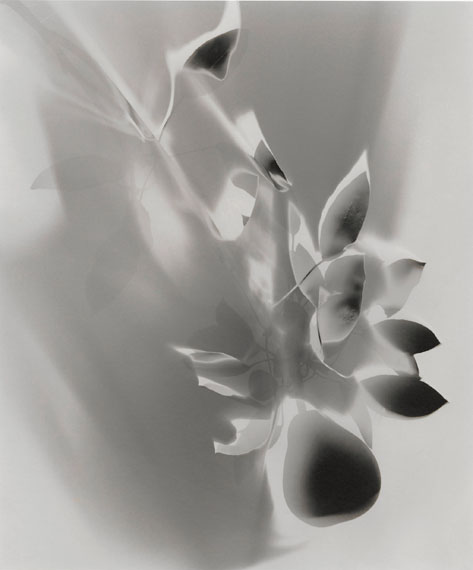
o.T., 1995
Fotogramm, 30 × 25 cm
© Floris Michael Neusüss
"NATURZEICHENZEICHNEN – Drawing the Symbols of Nature"
Curated by Janos Frecot
Exhibition: 4th July – 13th September 2015
Opening: Friday, 3rd July, 7 pm.
Opening speech: Janos Frecot
The Alfred Ehrhardt Stiftung has given guest-curator Janos Frecot carte blanche to present an exhibition on the theme of "Nature" that reflects his particular vision of photography. The exhibition is also his personal gesture of thanks to all those artists whose careers have run parallel to his own and who have became his friends. Many of the works are from his own private collection.
The title "NATURZEICHENZEICHNEN" is a word-play based on the word for "signs" and "symbols" and the word for "drawing". Here Janos Frecot is referring to both the images of Nature themselves and to our recording and re-interpretation of their ever-changing forms. There was a time when one never set out to document one’s surroundings without taking a pencil, a drawing-block and a paint box. Today we take a camera - analogue or digital – and use it in the same way as the pencil to record our world or to generate the image that we have made of it. Expressed in simple terms, this step from recording the world, to encompassing its fragile uniqueness can be summed up as the difference between image and reality.
The photographers in the exhibition come from a variety of times, places, vocations and areas of activity. Each shows us their vision of Nature in the visual language that they have evolved to present their view of the world and people and things. Most of the artists are something more than just photographers. Fritz Brill, a student of Johannes Itten, became a highly professional experimenter in the fields of photography and film through his intensive training as painter and graphic artist. He worked together with Hedwig Bornemann, his wife and steady hand. The author Arno Schmidt has produced not only grandiose word-pictures, ranging from lyricism to the grotesque, but also pictures of Nature. Their beauty bears witness to the same empathy and command of form as his writing. The pictures of Rainer König and Amin El Dib present the architect as constructor of our world; a similar impulse can be found in the work of Heidi Specker: her interiors resemble sepulchres where the signs and symbols of Nature are displayed to perfection. Dieter Appelt and Gabriele Kostas were professional musicians before they began to develop their conceptually-adjusted vision of the world. With Appelt it is the rhythm of the surface, with Kostas the organisation of movement in space and time. Hanns Zischler is the most versatile of all: not only photographer but also actor, author and publisher. His pin-hole images are dramatic presentations of time, light and colour.
Then there are the works of the pure photographers: Michael Schmidt, who died last year, is one of the most important photographic artists of our time. His work celebrates the precision of the colour grey – “the silverpoint of photography” - in all its resonant splendour. This also applies to the beautiful and little-known pictures by Hans W. Mende of his North German homeland, and to the light pear-fruit-and-leaves photogram by Floris M. Neusüss.
In her "Horses" Jitka Hanzlová pursues what made her "Forest" so fascinating: the pictorial design with its refined placement of the image within the frame and the exquisite colouring. The blossom images of Loredana Nemes are less concerned with their theme as such, than with their musically-intensified pictorial surface. Nanne Meyer’s ornithological notes extend the scope of the exhibition to include the fantastic world of her new delineations of existing materials.
Fifteen different temperaments, fourteen different ways of grappling with the ephemeral appearance of Nature – an open and boundless field of enterprise! (Text: Janos Frecot)
From 1978 to 2002 Janos Frecot was the director of the photographic collection of the Berlinische Galerie. In 1980, and on his recommendation, the collection was incorporated into what is now the Landesmuseum für Moderne Kunst where, for the next 20 years, he was active in collecting, exhibiting and publishing. He has also published over 40 books on Berlin-related subjects as well as studies on Erich Salomon, Martha Astfalck-Viez, Herbert Tobias, Arno Schmidt and Gisèle Freund. The Büchersammlung Frecot – the Frecot Collection of Books - that includes many unique items relating to the “back-to-nature” Lebensreform movement, was acquired by the Stanford University Libraries. In 2013, his exhibition Die Jahre mit der Kamera – the Years with the Camera - showed that he too is a visionary photographer; the urban and architectural images that he made between 1964 and 1967 anticipated much of what made the following generation of photographers so famous. Pictures of Nature have always been Frecot’s ruling passion and the traces of this passion can often to be seen in his work as a curator.
�
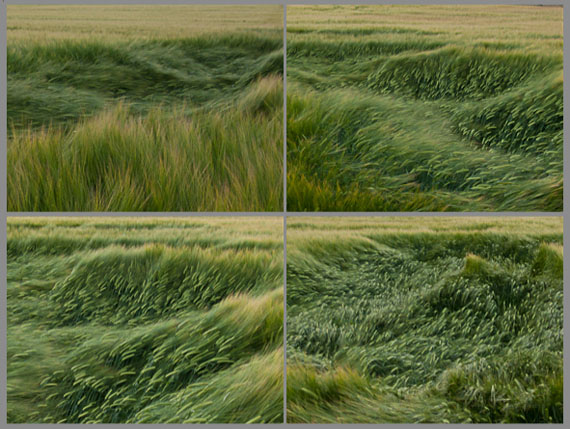
Felder (Ausschnitt) 9-teilige Arbeit 2011
9 C-Prints, insgesamt 93 × 123 cm
© Gabriele Kostas
NATURZEICHENZEICHNEN
Ausstellung: 4. Juli bis 13. September 2015
Eröffnung: 3. Juli, 19 Uhr
Eröffnungsrede: Janos Frecot
Auf Einladung der Alfred Ehrhardt Stiftung erhielt der Gast-Kurator Janos Frecot eine "carte blanche" für eine Ausstellung zum Thema Natur, die seine besondere Sichtweise der Fotografie widerspiegelt. Die Ausstellung mit dem Titel NATURZEICHENZEICHNEN wurde zur persönlichen Danksagung an viele Künstlerinnen und Künstler, die ihm zu Freunden und Weggefährten geworden sind. So stammen denn auch viele der hier gezeigten Arbeiten aus seiner privaten Sammlung.
Mit dem Ausstellungstitel spielt Janos Frecot auf zweierlei an: auf Bilder der Natur und auf das Notieren und Ausformulieren ihrer stets wandelbaren Gestalten. Früher verließ man nicht ohne Stift, Zeichenblock und Malzeug das Haus, um sich die Welt anzueignen. Heute verwenden wir dafür die Kamera, gleich ob analog oder digital. Wie früher den Zeichenstift nutzen wir die Kamera zum Vermessen der Welt oder zum Generieren des Bildes, das wir uns von ihr machen. Der Schritt vom Notieren zum Begreifen ihrer fragilen Einmaligkeit lässt sich vereinfacht als Differenz zwischen Abbild und Bild benennen.
Die Fotografinnen und Fotografen der Ausstellung, die aus verschiedenen Zeiten, Regionen, Berufen und Arbeitswelten kommen, zeigen uns ihre Sicht auf die Natur in der Bildsprache, die sie sich als Blick auf Welt, Menschen und Dinge erarbeitet haben. Dabei sind die meisten der ausgestellten Künstler mehr als „nur“ Fotografen: Der Schüler von Johannes Itten Fritz Brill wurde durch profunde Ausbildung als Maler und Grafiker zu dem durch hohe Professionalität geprägten Experimentator in Fotografie und Film, seine Frau Hedwig Bornemann war ihm Mitarbeiterin und feste Hand. Der Schriftsteller Arno Schmidt schuf neben seinen grandiosen, zwischen Lyrik und Groteske gespannten Sprachbildern seiner Prosa Naturfotografien, deren Schönheit von ebenso viel Formwillen wie Empathie zeugt. In den Bildern von Rainer König und Amin El Dib spürt man die Architekten als Welt-Konstrukteure, und einen ähnlichen Impuls sieht man in der Arbeit von Heidi Specker am Werk: ihre Interieurs erscheinen als Grabstätten, in denen Naturzeichen zur Vollendung gekommen sind. Dieter Appelt und Gabriele Kostas waren professionelle Musiker, bevor sie begannen, konzeptionell erarbeitete Bildwelten zu entwerfen. Geht es Appelt hier um die Rhythmisierung der Fläche, so Kostas um die Organisation von Bewegung im Raum durch Zeit. Der vielseitigste von allen - Schauspieler, Schriftsteller, Verleger und Fotograf - ist Hanns Zischler, dessen Lochkamerabilder als Inszenierungen von Licht, Farbe und Zeit erscheinen.
Hinzu kommen Arbeiten von "reinen" Fotografen wie dem vor einem Jahr verstorbenen Michael Schmidt, einem der bedeutendsten Fotokünstler unserer Zeit, dessen Werk die Feinheit des "Silberstiftes der Fotografie" im Präzisieren des Klangreichtums der Farbe Grau feiert. Das gilt auch für die schönen und kaum bekannten Bilder von Hans W. Mende aus dessen norddeutscher Heimat, und ebenso für das lichte Birnenfrucht- und Blätter-Fotogramm von Floris M. Neusüss.
Jitka Hanzlová führt mit "Horses" weiter, was schon an „Forest“ faszinierte: die Bestimmung der Bildgestalt durch raffinierteste Planung des Auschnitts und delikateste Farbigkeit. In den Blütenbildern von Loredana Nemes geht es weniger um thematisch als vielmehr musikalisch hochgespannte Bildoberflächen, und mit Nanne Meyers Ornithologischen Notizen erweitert sich die Ausstellung in die Welt des fantastischen Weiterzeichnens vorgefundener Materialien.
Fünfzehn künstlerische Temperamente, fünfzehn Verfahrensweisen, sich mit dem Wandel der Erscheinungen der Natur auseinanderzusetzen – ein grenzenlos offenes Arbeitsfeld! (Text: Janos Frecot)
Janos Frecot war von 1978 bis 2002 Leiter der Fotografischen Sammlung der Berlinischen Galerie, die auf seine Initiative seit 1980 am heutigen Landesmuseum für moderne Kunst entstand und an der er über zwanzig Jahre sammelnd, ausstellend und publizierend tätig war. Er veröffentlichte über 40 Bücher zu Berlin-Themen und Monographien über Erich Salomon, Martha Astfalck-Viez, Herbert Tobias, Arno Schmidt oder Gisèle Freund. Seine mit einmaligen Rara bestückte Büchersammlung Frecot zum Thema Lebensreform wurde von den Stanford University Libraries erworben. 2013 zeigten seine Ausstellung und Publikation Die Jahre mit der Kamera, dass er auch ein visionärer Fotograf ist, dessen Stadt- und Architekturfotografien aus den Jahren 1964-67 vieles vorwegnimmt, was die folgenden Fotografengenerationen berühmt machte. Die Bilder der Natur haben Frecot ein Leben lang beschäftigt und hinterließen immer wieder Spuren in seiner Arbeit als Ausstellungsmacher.�
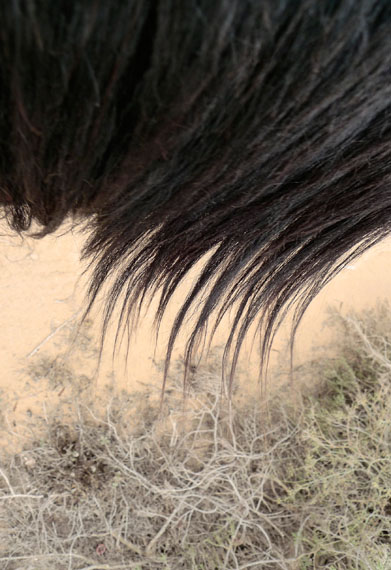
Untitled, from the series “Horses” 2010
archival pigment print, 43 × 29,5 cm
© Jitka Hanzlová / Courtesy Kicken Berlin
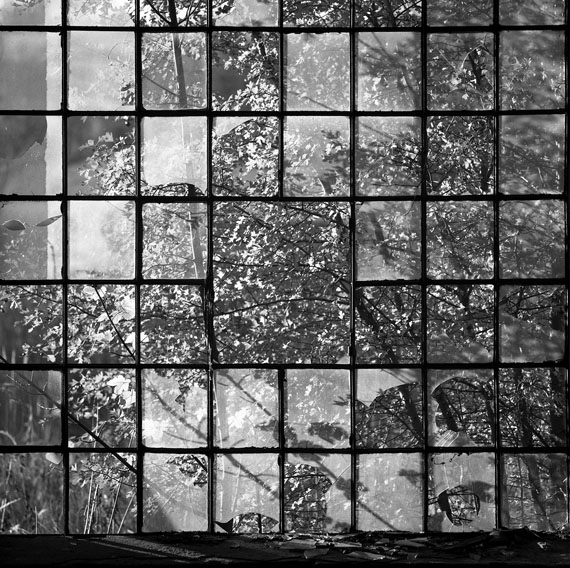
Wiesenburg/Mark, Fenster im Sägewerk (Window in a Saw Mill) 2001
Silbergelatinepapier, 23,7 × 23,3 cm
© Rainer König / Courtesy Collection Regard Berlin